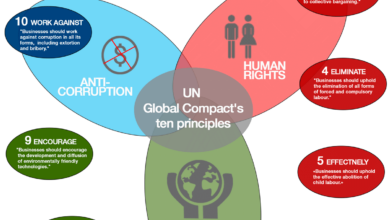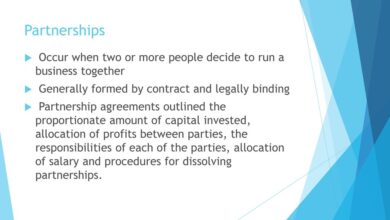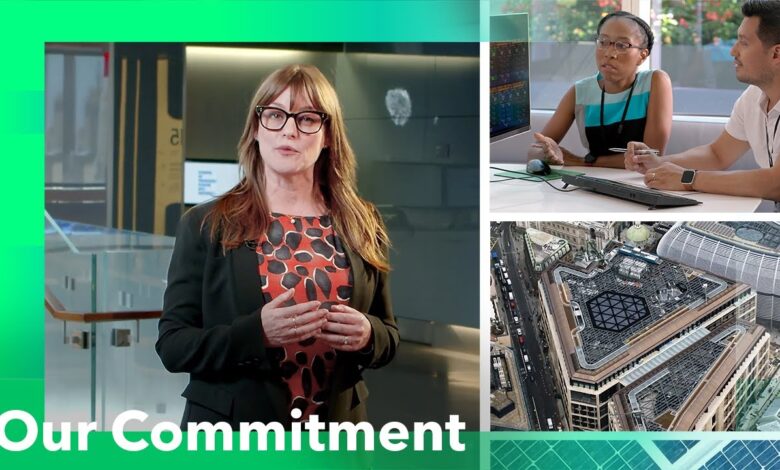
Collaboration for a Cleaner Future A Guide
Collaboration for a cleaner future is crucial for tackling our environmental challenges. This guide explores the concept of collective action, highlighting different types of partnerships, and the factors driving individuals and organizations to work together for a sustainable future. We’ll delve into the key strategies, obstacles, and successful examples of environmental initiatives.
From identifying the driving forces behind collaboration to analyzing future trends, this comprehensive overview aims to equip you with the knowledge and insights needed to understand and contribute to a cleaner, healthier planet.
Defining Collaboration for a Cleaner Future

Collaboration for a cleaner future transcends individual efforts, recognizing the interconnectedness of environmental challenges and the power of collective action. It’s a multifaceted approach that involves diverse stakeholders working together to address issues like pollution, resource depletion, and climate change. This shared responsibility fosters innovation, accelerates progress, and ultimately leads to more sustainable solutions.Effective collaboration necessitates a shared vision, clear communication, and a commitment to mutual benefit.
It’s about recognizing the strengths of each partner and leveraging those strengths to achieve a common goal: a healthier planet for all. By pooling resources, knowledge, and expertise, collaborations can achieve more than any single entity could on its own.
Types of Collaborations for Environmental Sustainability
Different types of collaborations are crucial for tackling environmental issues. These collaborations often involve various sectors, including governments, businesses, non-profit organizations, and communities.
- Public-private partnerships are a significant driver of progress. These partnerships leverage the resources and expertise of both the public and private sectors, allowing for a broader scope of action and a greater impact on environmental sustainability. Examples include joint initiatives for renewable energy development, waste management systems, and conservation projects.
- Community-based initiatives foster local ownership and empowerment. These collaborations often involve local residents in planning, implementing, and monitoring environmental projects. The engagement of local communities in conservation efforts leads to greater awareness and participation in sustainable practices.
- International collaborations address global environmental challenges that transcend national boundaries. They are essential for tackling issues like climate change, biodiversity loss, and pollution of shared resources. Agreements and partnerships between nations are vital for effective solutions to global environmental problems.
Key Characteristics of Effective Collaborations
Effective collaborations for a cleaner future share several key characteristics. These elements ensure that initiatives are not only successful but also sustainable in the long term.
- Shared Vision and Goals: A clear and common understanding of the desired outcomes is paramount. Collaboration should have a defined mission statement, including specific environmental goals, and metrics to measure success.
- Clear Communication and Transparency: Open and honest communication channels are vital for coordinating efforts and addressing potential conflicts. Regular updates, feedback mechanisms, and transparent decision-making processes are critical to maintaining trust and fostering collaboration.
- Mutual Benefit and Shared Responsibility: Collaboration should benefit all partners, not just one or two. The division of labor and responsibilities should be equitable, recognizing the unique contributions of each party.
- Flexibility and Adaptability: Environmental challenges are complex and dynamic. Effective collaborations must be flexible enough to adapt to changing circumstances and new information. The ability to adjust plans and strategies is essential for long-term success.
Examples of Successful Collaborations
Numerous collaborations have demonstrated the potential of joint efforts to address environmental issues. These initiatives illustrate the positive impact of combined efforts.
- The Paris Agreement: This international agreement exemplifies international collaboration in tackling climate change. It unites nations in a common goal of limiting global warming. Its success is a testament to the power of global cooperation in addressing a global challenge.
- The Global Environment Facility (GEF): This global partnership provides financial and technical assistance to developing countries for environmental projects. This collaboration demonstrates the value of international collaboration in supporting sustainable development in developing countries.
- Local Community Initiatives: Many communities have successfully implemented local environmental projects through collaborations between residents, local governments, and non-profit organizations. These collaborations often involve waste reduction programs, community gardens, and environmental education initiatives.
Potential Benefits of Collaboration
Collaboration for a cleaner future brings several significant advantages. The combined strengths of diverse stakeholders can produce more sustainable solutions.
- Enhanced Innovation and Creativity: Combining diverse perspectives and expertise often leads to innovative solutions. Collaboration fosters a more creative approach to environmental problems.
- Increased Efficiency and Effectiveness: Pooling resources and expertise can significantly increase the efficiency and effectiveness of environmental initiatives. By sharing costs and workload, collaborations can achieve more with less.
- Increased Public Awareness and Participation: Collaboration can raise public awareness of environmental issues and encourage broader participation in sustainable practices. Community-based projects, for instance, foster a sense of ownership and accountability.
- Sustainable Solutions: The long-term sustainability of solutions is enhanced by collaboration. This approach ensures that environmental initiatives are resilient and adaptable to changing circumstances.
Driving Forces Behind Collaboration
The quest for a cleaner future necessitates unprecedented levels of collaboration between individuals, businesses, and governments. Understanding the driving forces behind these partnerships is crucial for maximizing their effectiveness. Success hinges on identifying the motivations, incentives, and shared values that propel action and create lasting change. From profit-driven enterprises to altruistic organizations, diverse motivations converge to address the critical challenge of environmental sustainability.The collective effort toward a cleaner future is significantly shaped by the interplay of various forces.
These forces range from economic incentives and regulatory pressures to shared values and technological advancements. By examining these driving forces, we can gain a clearer picture of the factors that motivate action and foster impactful collaborations.
Motivations for Collaboration
A diverse array of motivations underpins collaborative efforts for a cleaner future. Profit-driven organizations may see environmental sustainability as a means to enhance their brand image, reduce operational costs, and unlock new market opportunities. For example, companies implementing energy-efficient technologies often report significant cost savings and heightened consumer appeal. Conversely, altruistic organizations may prioritize environmental protection as a core value, driven by a desire to safeguard the planet for future generations.
Examples of this include environmental advocacy groups and non-profit organizations working on sustainable solutions. These varying motivations, while sometimes distinct, can complement and strengthen collaborative efforts.
Role of Incentives and Regulations
Incentives and regulations play a critical role in fostering collaboration for a cleaner future. Government policies, such as carbon taxes or subsidies for renewable energy, create financial incentives for businesses to adopt sustainable practices. For example, a carbon tax can make polluting activities more expensive, thus encouraging the transition to cleaner alternatives. Regulations, such as emission standards, enforce environmental protection and drive technological innovation.
Collaboration is key for a cleaner future, and that extends beyond just environmental efforts. Think about how savvy business owners can leverage successful strategies like the five tips for selling a business, five tips for selling a business , to create sustainable practices in their new ventures. Ultimately, successful collaboration in business can be a powerful catalyst for environmental progress.
The combination of incentives and regulations creates a more conducive environment for collaboration by aligning economic interests with environmental goals. The European Union’s Emissions Trading System (ETS) is a prominent example of how regulations can effectively incentivize emission reductions.
Shared Values and Goals
Shared values and goals are essential for driving effective collaboration. When organizations and individuals share a commitment to environmental sustainability, they are more likely to work together towards common objectives. For instance, a shared vision for a sustainable future can unify diverse stakeholders, from governments to corporations to community groups. Collaborative initiatives often involve the development of shared targets and measurable indicators of progress.
This ensures accountability and transparency, promoting effective collaboration.
Working together for a cleaner future is crucial. Organizations like sustaining our waters the fox wolf watershed alliance are fantastic examples of how collaboration can make a real difference in protecting our precious water sources. Their dedication to the health of the environment inspires me, and it highlights how vital collective action is for a brighter, more sustainable future for all.
Profit-Driven vs. Altruistic Motivations
Profit-driven and altruistic motivations often drive collaboration in different ways. Profit-driven organizations prioritize economic returns while often recognizing the positive societal impact of their efforts. For example, companies may adopt sustainable practices to enhance their brand reputation and attract environmentally conscious consumers. Altruistic motivations, on the other hand, prioritize environmental protection and social good, often with less emphasis on immediate financial returns.
Examples include environmental organizations and community initiatives. The interplay of these motivations can lead to innovative solutions and effective partnerships.
Influence of Technological Advancements
Technological advancements significantly influence collaboration efforts for a cleaner future. Innovations in renewable energy, energy storage, and waste management are crucial drivers of change. For example, the development of more efficient solar panels has reduced the cost of solar energy, making it a more viable alternative to fossil fuels. These technological advancements often require collaboration between research institutions, technology companies, and policymakers.
The development and implementation of advanced technologies often rely on collaborative efforts to overcome challenges and achieve progress.
Challenges and Obstacles to Collaboration
Navigating the path toward a cleaner future requires overcoming significant hurdles. Collaboration, while crucial, is often hampered by diverse perspectives, conflicting interests, and communication breakdowns. Addressing these challenges is essential for achieving meaningful progress on environmental issues.The complexity of environmental problems necessitates a multitude of perspectives and expertise. Different stakeholders, including governments, businesses, and communities, may have varying priorities and motivations.
This often leads to disagreements and delays in implementing effective solutions. Understanding these obstacles is the first step toward fostering successful and sustainable collaborations.
Common Challenges in Collaborative Environmental Projects
Collaborative environmental projects often face a range of obstacles. These can stem from differing goals, insufficient resources, or lack of clear communication channels. Addressing these challenges head-on is vital for the success of any initiative.
- Conflicting Interests: Stakeholders may prioritize different aspects of a project, leading to disagreements over resource allocation, timelines, and responsibilities. For example, a company might prioritize economic gains while a community might focus on preserving natural resources. These contrasting objectives can significantly hinder collaboration.
- Resource Constraints: Limited financial resources, technical expertise, or personnel can hamper the ability of collaborators to execute a project effectively. A lack of funding can prevent the implementation of necessary technologies or the hiring of crucial personnel. This situation requires careful planning and resource management to ensure the project remains on track.
- Communication Barriers: Differences in communication styles, language barriers, or lack of clear communication channels can lead to misunderstandings and misinterpretations. This can result in ineffective strategies and hinder the ability of collaborators to work together effectively. Utilizing appropriate communication tools and fostering clear communication protocols are critical for success.
Potential Conflicts of Interest
Conflicts of interest can arise when the personal or organizational interests of one collaborator potentially jeopardize the integrity or success of the project. Identifying and mitigating these conflicts is essential for maintaining trust and ensuring transparency.
- Identifying Conflicts: A thorough assessment of potential conflicts of interest should be conducted early in the collaboration process. This includes identifying any financial interests, political affiliations, or personal relationships that could influence decisions. Transparent disclosure of potential conflicts of interest is crucial.
- Mitigation Strategies: Implementing clear conflict-of-interest policies and procedures is vital. These policies should Artikel steps to address potential conflicts, including the separation of duties, disclosure requirements, and the involvement of independent third parties where necessary. For example, establishing a neutral body to mediate disagreements is a practical strategy to address potential conflicts.
Communication Barriers and Their Impact
Effective communication is fundamental to successful collaboration. Communication barriers can create misunderstandings and hinder progress in environmental projects. Overcoming these barriers requires proactive strategies.
- Language Differences: Differences in language can lead to misunderstandings and misinterpretations. Using a common language or providing translation services can mitigate these issues.
- Cultural Differences: Varying cultural norms and expectations can affect communication styles. Understanding and respecting these differences can improve communication and collaboration.
- Lack of Clear Communication Channels: Establish clear communication channels and protocols from the beginning. This will allow for the efficient flow of information and ensure all parties are on the same page.
Importance of Diverse Perspectives
Diverse perspectives are crucial for addressing environmental issues comprehensively. Different groups and individuals bring unique experiences, knowledge, and insights to the table.Diverse teams can better identify the multifaceted nature of environmental problems and devise creative solutions.
Strategies to Overcome Challenges
Several strategies can help overcome the obstacles to collaboration. A comprehensive approach is essential to ensure successful outcomes.
- Clear Goals and Objectives: Establish clear, measurable goals and objectives from the start. This provides a shared understanding and framework for all collaborators.
- Strong Leadership: Effective leadership is critical for guiding the collaboration and resolving conflicts. A collaborative leader fosters trust and promotes open communication.
- Continuous Evaluation and Feedback: Regular evaluation and feedback mechanisms are vital to assess progress, identify areas for improvement, and adapt strategies as needed.
Methods and Strategies for Collaboration
Effective collaboration is crucial for achieving ambitious environmental goals. Different approaches, frameworks, and tools can significantly enhance the success of initiatives aimed at a cleaner future. By understanding the dynamics of collaboration and implementing suitable strategies, we can maximize the impact of collective efforts.
Framework for Effective Collaboration Initiatives
A robust framework for effective collaboration initiatives involves several key elements. Firstly, clearly defined goals and objectives are paramount. These should be measurable, achievable, relevant, and time-bound (SMART). Secondly, a comprehensive understanding of the needs and interests of all participating stakeholders is essential. This requires active engagement and open communication channels.
Thirdly, establishing clear roles and responsibilities for each participant is critical to ensure accountability and avoid duplication of effort. Finally, a well-defined process for decision-making and conflict resolution is vital for smooth operation and maintaining positive momentum.
Collaboration Tools and Technologies
Numerous tools and technologies can facilitate collaboration for environmental projects. These range from simple communication platforms like Slack and Microsoft Teams to specialized project management software like Asana or Trello. Furthermore, Geographic Information Systems (GIS) software plays a crucial role in mapping environmental data and enabling collaborative spatial analysis. Cloud-based storage solutions like Google Drive or Dropbox allow for secure file sharing and collaborative document editing.
Online forums and discussion boards are useful for information sharing and knowledge exchange among participants.
Comparison of Collaboration Models
Different collaboration models have varying strengths and weaknesses. A partnership involves a formal agreement between two or more organizations with shared goals. Alliances are often less formal, focusing on mutual benefit and shared resources. Networks, on the other hand, are broader and less structured, involving a diverse range of stakeholders with a shared interest in the environmental issue.
The choice of model depends on the specific project’s goals, resources, and the nature of the participating organizations.| Collaboration Model | Characteristics | Strengths | Weaknesses ||—|—|—|—|| Partnerships | Formal agreements, shared resources, joint decision-making | Strong commitment, shared accountability, potentially increased resources | Complex negotiations, potential conflicts over control, limited flexibility || Alliances | Less formal than partnerships, mutual benefit | Easier to establish, greater flexibility, diverse contributions | Less formal structure, potential for ambiguity, weaker accountability || Networks | Broad participation, diverse stakeholders, shared interest | Diverse perspectives, broader reach, collaborative problem-solving | Coordination challenges, potential for conflicting interests, less direct control |
Stakeholder Engagement Approaches
Effective stakeholder engagement is crucial for successful environmental initiatives. This includes identifying key stakeholders, understanding their concerns and needs, and developing communication strategies tailored to each group. Engagement can take various forms, including workshops, surveys, public forums, and one-on-one meetings. Actively listening to and incorporating the perspectives of all stakeholders is essential to build trust and ensure long-term support for the project.
Transparency and Accountability
Transparency and accountability are essential elements of successful collaborative projects. Open communication, regular reporting, and clear lines of responsibility foster trust and ensure that the project aligns with its stated objectives. Publicly available progress reports, regular meetings, and feedback mechanisms are important tools for maintaining transparency and accountability. By documenting decisions, actions, and outcomes, stakeholders can better understand the project’s progress and hold collaborators accountable.
Working together for a cleaner future is crucial, and it’s not just about fancy tech or grand pronouncements. Genuine commitment, like authenticity is essential to brand building , is key. Ultimately, it’s about consistent action and a shared understanding of the problems we face, which will propel us towards a healthier planet for everyone.
This is crucial for building public trust and maintaining the legitimacy of the initiative.
Illustrative Examples of Collaboration
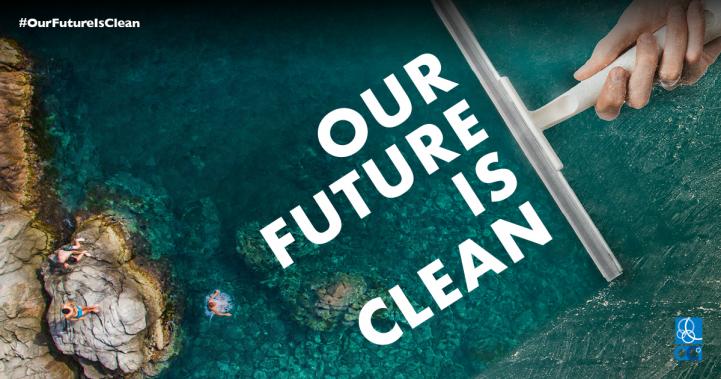
Collaboration for a cleaner future requires a shared vision and coordinated action. Successful initiatives often involve diverse stakeholders working together to overcome obstacles and achieve common goals. This section provides a detailed example of a successful collaborative environmental initiative, highlighting its strategies, impact, and lessons learned.
A Successful Collaborative Initiative: The Great Pacific Garbage Patch Cleanup
The Great Pacific Garbage Patch cleanup project, though not a singular, unified effort, showcases successful collaboration among various organizations and individuals in addressing a global environmental challenge. The cleanup effort aims to remove plastic debris from the ocean’s surface, focusing on the massive accumulation of plastic waste in the North Pacific Gyre. This initiative underscores the importance of coordinated efforts across different levels – from grassroots movements to large-scale organizations – to tackle significant environmental problems.
Strategies and Tactics
The Great Pacific Garbage Patch cleanup initiative employs a multi-faceted approach. Key strategies include:
- Development of innovative cleanup technologies: Researchers and engineers collaborate to design and test new tools and methods for collecting and processing marine debris. This includes the development of specialized nets and robotic systems for efficient removal of plastic waste.
- Community engagement and awareness campaigns: Raising public awareness about the issue of plastic pollution and encouraging responsible consumer behavior is crucial. This includes educational campaigns, outreach programs, and partnerships with local communities.
- International cooperation and knowledge sharing: The initiative involves partnerships with organizations and governments worldwide. Knowledge sharing and the exchange of best practices are essential for efficient and sustainable cleanup efforts.
- Data collection and analysis: Tracking the amount of debris collected, the types of plastics recovered, and the impact of the cleanup on marine ecosystems provides valuable insights. This data informs future strategies and enhances the effectiveness of the initiative.
Impact on Environmental Sustainability
The impact of the Great Pacific Garbage Patch cleanup, while not immediately visible, is substantial. The initiative contributes to the reduction of marine pollution, minimizing the harmful effects of plastic debris on marine life and ecosystems. By removing plastic waste, the cleanup effort reduces the risks of entanglement, ingestion, and habitat disruption for marine organisms. Long-term effects are expected to include a healthier marine environment, improved biodiversity, and a cleaner ocean for future generations.
Key Participants and Their Roles
| Participant | Role |
|---|---|
| Ocean Conservancy | Leading organization coordinating the cleanup efforts |
| The 5 Gyres Institute | Research and data collection |
| National Oceanic and Atmospheric Administration (NOAA) | Providing scientific expertise and monitoring |
| International organizations (e.g., UNEP) | Facilitating international collaboration |
| Volunteers and community groups | Direct participation in cleanup activities |
Lessons Learned
The Great Pacific Garbage Patch cleanup project demonstrates that effective collaboration across different sectors and levels is essential for tackling complex environmental issues. The initiative highlights the importance of:
- Long-term commitment: Addressing environmental problems requires sustained effort and resources over an extended period.
- Strategic partnerships: Building strong relationships and leveraging expertise from various stakeholders is crucial for success.
- Adaptability: The effectiveness of strategies may need adjustments based on new information and changing conditions.
- Public engagement: Communicating the importance of the issue to the public and encouraging participation are vital for long-term impact.
Future Trends and Projections
The collaborative spirit driving environmental initiatives is poised for significant evolution. Emerging technologies, shifting environmental realities, and the growing recognition of the interconnectedness of global sustainability issues will shape the future of these partnerships. Understanding these trends is crucial for effective adaptation and impactful action.
Emerging Trends in Collaborative Environmental Initiatives
The landscape of environmental collaborations is transforming. Focus is shifting from isolated projects to integrated, multi-sectoral approaches. This means organizations are working together on comprehensive strategies rather than isolated initiatives. Cross-border collaborations are increasing as environmental challenges transcend geographical boundaries. The rise of citizen science and community-based initiatives are empowering individuals to participate actively in conservation efforts.
Future Role of Technology in Supporting Collaboration
Technology is playing an increasingly critical role in facilitating collaboration. Real-time data sharing platforms, advanced modeling tools, and sophisticated communication systems are enhancing the efficiency and effectiveness of environmental partnerships. For example, satellite imagery and sensor networks provide invaluable data for monitoring deforestation, tracking pollution, and assessing the impact of climate change. These tools are democratizing access to environmental information, enabling broader participation and faster responses to emerging challenges.
Adapting to Changing Environmental Conditions in Collaboration Efforts
Environmental conditions are constantly evolving, demanding that collaborations adapt and refine their strategies. Climate change is a primary driver of this change, impacting ecosystems and requiring new approaches to resource management. Collaborations must incorporate climate change models and predictions into their planning and decision-making processes. Flexibility and adaptability are key to navigating the complex and unpredictable future of environmental challenges.
Innovative Collaborations
Examples of innovative collaborations are emerging. One notable example is the global effort to develop and implement carbon capture technologies, involving governments, research institutions, and private companies. Another notable example is the growing use of blockchain technology to track and verify the sustainability of products and supply chains, increasing transparency and accountability in environmental initiatives.
Potential Impact of Future Trends on Global Sustainability
The future impact of these trends on global sustainability is substantial. Increased collaboration, driven by technology and adaptability, has the potential to significantly reduce greenhouse gas emissions, promote sustainable resource management, and protect biodiversity. These trends also hold the potential to enhance global equity and create more resilient communities. Effective and well-coordinated collaborations are vital to tackling global environmental challenges and ensuring a sustainable future.
Impact and Measurement of Collaboration
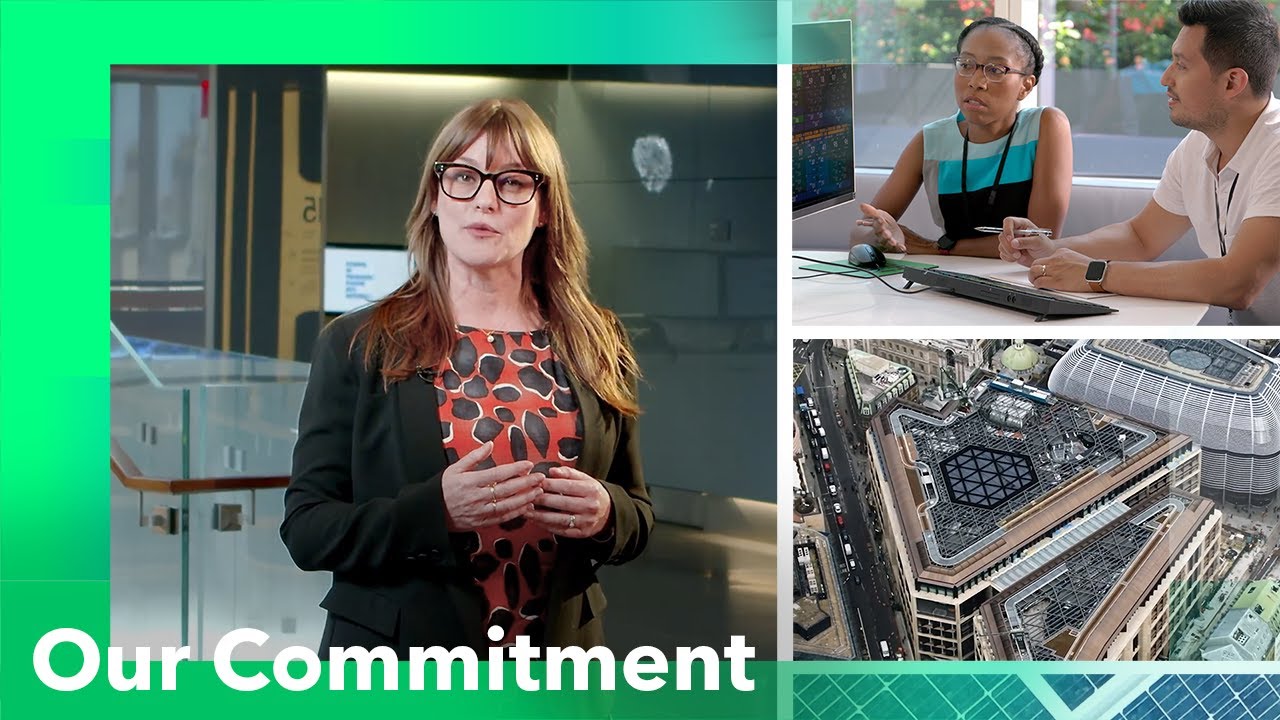
Assessing the effectiveness of collaborative projects for a cleaner future requires a robust framework for evaluation. Simply measuring participation or output isn’t enough; we need to understand the genuine impact on environmental sustainability. This involves meticulously tracking progress, analyzing data, and reporting results transparently to stakeholders. Ultimately, this ensures accountability and allows for adjustments and improvements in future collaborations.
Framework for Evaluating Collaborative Projects
A comprehensive framework for evaluating collaborative projects should encompass multiple dimensions, including environmental, social, and economic impacts. A project’s success shouldn’t be judged solely on its output but also on the long-term sustainability of the solutions and the process itself. The framework should include specific, measurable, achievable, relevant, and time-bound (SMART) goals, allowing for clear progress tracking. Critical factors for evaluation include the effectiveness of communication and knowledge sharing between partners, the development of capacity and skills within participating organizations, and the overall impact on reducing environmental risks and improving environmental conditions.
Metrics for Measuring Environmental Sustainability Impact
Several key metrics can quantify the impact of collaborations on environmental sustainability. These include reductions in greenhouse gas emissions, improvements in air and water quality, conservation of natural resources, and the adoption of sustainable practices across the supply chain. Quantitative data, such as the reduction in carbon emissions from a manufacturing process after a collaborative initiative, is crucial.
Qualitative data, like the increased awareness and adoption of sustainable practices by a community, also plays a vital role. The specific metrics used should be tailored to the unique objectives of each collaboration.
Tracking Progress and Outcomes of Initiatives
A well-structured table is essential for tracking the progress and outcomes of various initiatives. This allows for a comprehensive overview of the collaborative efforts and facilitates the identification of areas needing improvement.
| Initiative | Target | Baseline Data | Current Data | Progress (%) | Challenges | Next Steps |
|---|---|---|---|---|---|---|
| Renewable Energy Integration Project | Reduce energy consumption by 20% | 1000 kWh per month | 800 kWh per month | 20% | Supply chain delays | Improve communication with suppliers |
| Waste Management Collaboration | Reduce landfill waste by 15% | 500 tons per month | 425 tons per month | 15% | Lack of public awareness | Implement public awareness campaigns |
Importance of Data Collection and Analysis
Thorough data collection and analysis are vital for evaluating the effectiveness of collaborative projects. Data should be collected consistently and meticulously, ensuring accuracy and reliability. Data analysis should identify trends and patterns in project performance and identify any unexpected challenges. Data visualization tools can be used to present complex data in an accessible and easily understandable manner to stakeholders.
Methods for Reporting and Communicating Results
Reporting and communicating results effectively is crucial for maintaining transparency and fostering stakeholder engagement. Regular progress reports, presentations, and publications can inform stakeholders about the outcomes of collaborative projects. Visualizations and interactive dashboards can be used to communicate data clearly and engagingly. Publicly accessible reports and presentations can also demonstrate the tangible impact of collaboration and encourage further engagement.
An open dialogue with stakeholders, including communities directly affected by the collaboration, is crucial for transparent and effective communication.
Case Studies and Analysis
Collaboration is crucial for tackling complex environmental challenges. Real-world examples illuminate successful strategies, revealing the strengths and weaknesses of different approaches. Analyzing these case studies provides valuable insights for future initiatives, allowing us to learn from both successes and failures.
The Great Barrier Reef Coral Restoration Project
This collaborative effort involves scientists, local communities, and government agencies working to restore coral reefs damaged by climate change and pollution. The project employs innovative techniques like coral gardening, where fragments of healthy coral are cultivated and transplanted to damaged areas.
- Strengths: Strong community engagement, innovative approaches to coral restoration, and diverse partnerships across sectors. The project has leveraged technology and data collection to monitor the progress of the restoration efforts.
- Weaknesses: The long-term viability of the restored reefs is still under evaluation, and funding fluctuations pose a threat to the project’s continuation. Environmental factors, such as rising ocean temperatures, remain a significant challenge.
- Long-Term Impact: The project’s success will have significant implications for marine biodiversity and coastal communities. If successful, it could serve as a model for other coral restoration initiatives around the globe.
- Environmental Goals Achieved: By successfully establishing coral nurseries and transplanting coral fragments, the project has demonstrated the effectiveness of collaboration in tackling coral bleaching. Data collection and analysis provide valuable insights into the restoration process, which helps refine future strategies.
- Comparison of Approaches: Traditional approaches to coral restoration often focused on localized efforts. The Great Barrier Reef project stands out for its comprehensive and collaborative approach, encompassing scientific research, community involvement, and governmental support. This holistic approach has been proven more successful in addressing the multifaceted nature of coral reef degradation.
The California Air Resources Board’s Regulation of Greenhouse Gas Emissions, Collaboration for a cleaner future
This collaborative effort involves various stakeholders, including industries, environmental groups, and government agencies, working to reduce greenhouse gas emissions from various sources.
- Strengths: Clear regulatory framework and strong public support for environmental protection. The diverse stakeholders are driven by a common goal to mitigate climate change.
- Weaknesses: The project faces significant political opposition from industries resistant to emission reduction mandates. Enforcement and compliance monitoring can be challenging across diverse sectors.
- Long-Term Impact: The project aims to reduce air pollution, improve public health, and mitigate climate change. The long-term impact will depend on the success of future regulations and the willingness of stakeholders to embrace change.
- Environmental Goals Achieved: Regulations have resulted in a measurable reduction in greenhouse gas emissions from certain sectors. This demonstrates the power of regulatory frameworks to drive environmental change, although challenges remain in enforcing the regulations across all industries.
- Comparison of Approaches: The California approach contrasts with other states’ policies that have adopted less stringent emission reduction targets. The Californian model highlights the importance of strong regulatory frameworks, but also the need for continued stakeholder engagement to overcome political opposition.
Engaging Stakeholders and Communities
Community involvement is crucial for the success of any collaborative initiative aimed at a cleaner future. Ignoring the needs and perspectives of local communities can lead to projects facing significant opposition, hindering progress and potentially creating unintended negative consequences. Effective engagement fosters trust, ensures projects align with community values, and ultimately increases the likelihood of long-term sustainability. By actively listening to and incorporating feedback from diverse stakeholders, we can create solutions that benefit everyone.A key component of successful collaboration lies in the active engagement of communities and stakeholders.
This involves more than simply informing them about projects; it requires genuine dialogue, the opportunity to contribute meaningfully to the process, and recognition of their concerns and needs. Understanding the perspectives of various stakeholders, from local residents to businesses and government agencies, is essential to building consensus and support for a cleaner future.
Importance of Community Involvement
Community involvement is paramount for a successful and sustainable collaborative initiative. By including local communities, the projects can gain valuable insights into local concerns, needs, and perspectives, thus fostering a sense of ownership and responsibility. Involving local communities helps to build trust and support for the initiative, making it more likely that the project will be implemented effectively and maintain long-term success.
Methods for Engaging Stakeholders in Decision-Making
Several methods can be used to effectively engage stakeholders in decision-making processes. Public forums, workshops, and online platforms provide opportunities for open discussion and the exchange of ideas. Surveys, questionnaires, and focus groups allow for gathering input from a wider range of stakeholders, providing valuable data and insights. Involving community representatives in advisory committees and task forces ensures their voice is heard and considered throughout the decision-making process.
Ensuring transparency and accessibility to information throughout the process is crucial for building trust and participation.
Communicating the Value of Collaboration
Clearly communicating the value proposition of collaboration is essential for engaging stakeholders. Highlighting the benefits of the initiative, such as improved environmental conditions, economic opportunities, and enhanced community well-being, can effectively motivate participation. Using visual aids, storytelling, and testimonials from other communities that have benefited from similar initiatives can further emphasize the positive impact of collaboration. Tailoring communication to the specific concerns and interests of different stakeholder groups is crucial to ensure the message resonates effectively.
Building Trust and Rapport with Stakeholders
Building trust and rapport with stakeholders is fundamental to successful collaboration. Actively listening to concerns, addressing concerns promptly and transparently, and acknowledging diverse perspectives are key elements. Demonstrating respect for stakeholder views and actively seeking feedback fosters a sense of ownership and shared responsibility. Consistency and reliability in communication, along with timely responses, are critical to building trust and fostering a strong partnership.
Successful Community Engagement Strategies
Numerous successful community engagement strategies have been implemented in various projects across the globe. The creation of dedicated community hubs and resource centers facilitates access to information and provides a platform for dialogue. Partnering with local organizations and community leaders to amplify the message and build support enhances the impact of the project. Creating interactive maps and visual representations of the project’s impact helps stakeholders visualize the potential benefits.
Utilizing diverse communication channels, such as social media, local newspapers, and community events, broadens the reach and engagement. One example involves a project in a coastal town that used community forums, workshops, and social media to engage residents in discussions about reducing plastic waste. Through these channels, the project gained valuable feedback and support, ultimately leading to a successful reduction in plastic consumption.
End of Discussion: Collaboration For A Cleaner Future
In conclusion, collaboration for a cleaner future isn’t just a desirable goal; it’s a necessity. By understanding the various aspects, challenges, and successful models, we can foster effective partnerships and achieve significant progress in environmental sustainability. The future depends on our collective action, and this guide provides a roadmap for achieving a brighter, greener tomorrow.



